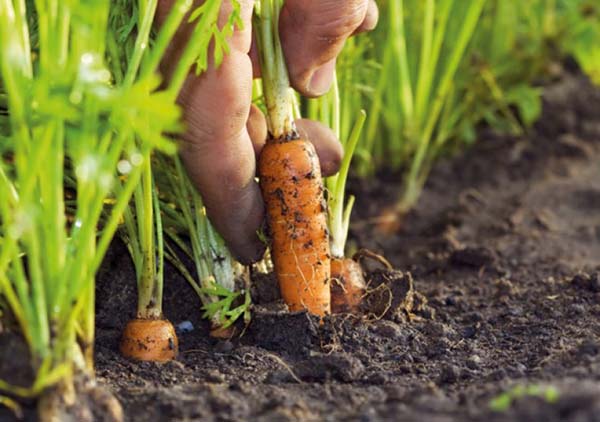How often to water carrots outdoors and when to stop
Many novice gardeners often have difficulties in growing root crops. You can often hear: "My beets and carrots are constantly failing!" Indeed, in order for carrots to grow healthy, even, beautiful and tasty, they need proper care. Moreover, watering takes one of the most important places, and non-observance of its rules often leads to failures: root crops are obtained deformed (horned), hairy and very often cracking.
Next, we will figure out what are the rules for watering carrots in the open field after planting, how often to water and how much water to pour, and also answer one of the most exciting growing questions: "When to stop watering carrots?"
Short answer: 2-3 weeks before harvest.
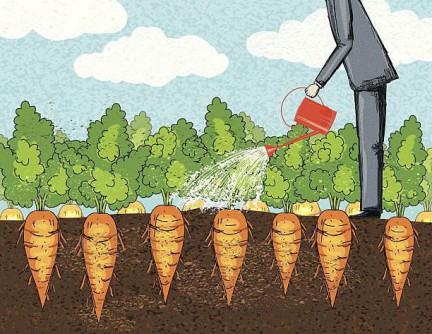
Content
Why is it important to water carrots on time and correctly?
Any plant needs a sufficient amount of nutritious moisture for good growth and normal development. Carrots are no exception.
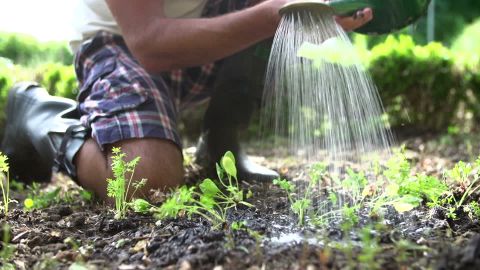
Naturally, it is always worth sticking to the golden mean, so carrots will also not like severe drought or a swampy bed, especially if you have relatively clay soil.
And although carrots are a fairly drought-resistant crop, you can get a high yield only with regular watering.
Interesting! Carrots are especially adapted to air drought, which is facilitated by its dissected leaves and pubescence of leaves and stems.
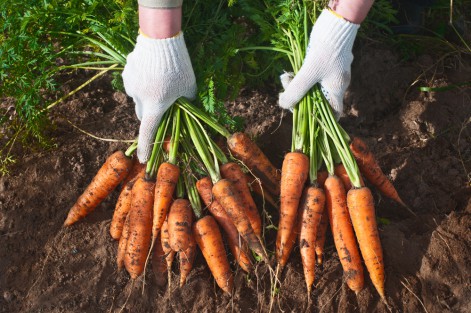
How to properly water carrots outdoors
Basic rules and tips for watering carrots:
- For watering carrots, it is advisable to use warm and settled water, but cool enough is also suitable (but excessively cold water can cause oppression of the plant).
Note! It is impossible to use ice water directly from the well, but from the hose it is the most (if the water temperature is +18 .. + 20 degrees). But it is still optimal to have a barrel or some other container with water in the country.
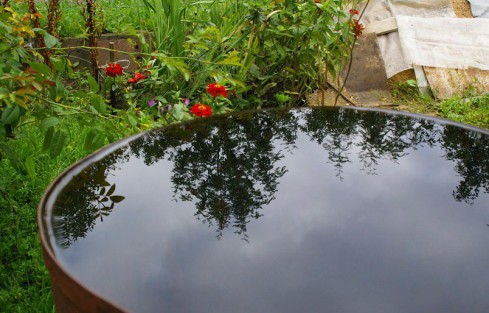
- You can water in the morning (before lunch) or in the evening (after 17-19 hours).
Daytime watering in hot weather is a very bad idea. It's another matter if the weather is cloudy, but in this case it is better to water the carrots before lunch.
- You can water the carrots as under the root or along the grooves, and by sprinkling (however, in this case, you can provoke the appearance carrot fly).
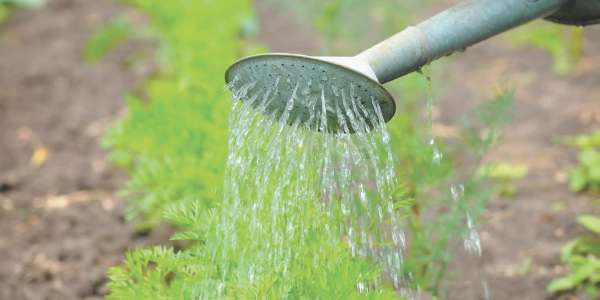
By the way! Of course, the most efficient way to water is drip irrigation, but in suburban conditions they are almost never used (another thing is when growing tomatoes, cucumbers or peppers). With this method of irrigation, water flows directly into the zone of the root system and is most effectively used by plants, since evaporation occurs only through them.
Interesting! On a hot summer day, when sprinkling, up to 40% of the water evaporates, before reaching the plants.
- Watering should be abundant, but not frequent, approximately every 5-10 days (for example, every weekend).
There is no point in watering daily and little by little!
- In general, the frequency and rate (volume) of irrigation depend on the stage of carrot vegetation and weather conditions (if the weather is dry and hot, the number of irrigations should be increased, rainy ones should be minimized).
- Watering must be mandatory uniform.
Periods of dryness should not be allowed, which will be abruptly replaced by abundant moisture, otherwise your roots will simply crack.
Thus, the main principle of watering carrots is abundant, but infrequently and necessarily - regularly.
Mulching
So that moisture is better retained in the soil and you can water the carrots less often, you can mulch the aisles with hay, straw, i.e. cut grass, sawdust, coniferous litter or peat.
By the way! It is believed that a sufficiently dense mulch will not give an opportunity carrot fly lay eggs in the soil next to the seedlings.
Loosening and weeding
If you do not mulch planting, then it is imperative to regularly carry out weeding and loosening.
So, after each watering and rain, when the water is absorbed (after 1-2 hours), do not forget to loosen it to a shallow depth - about 3-4 cm.
By the way! Thanks to loosening, you can also partly get rid of carrot flywhich lays eggs next to root vegetables.
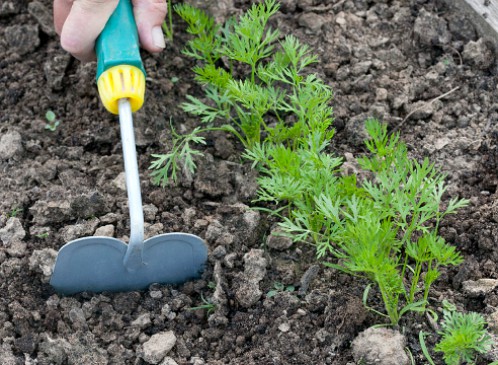
When and how to water carrots: rate and frequency of watering
Timely watering is the key to getting a high-quality harvest.
So, during the entire period of growing carrots, there are 2 most important points when we must necessarily provide the plant with the necessary moisture.
- During seed germination.
- From the moment when the thickness of the root crop reaches 5-7 mm (usually this happens when 4-5 leaves are formed), and until its full maturation.
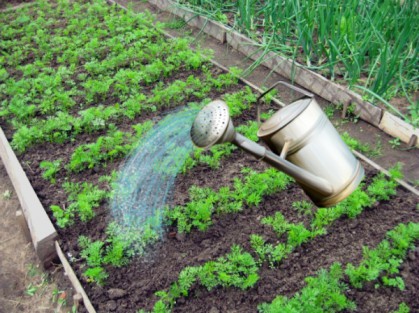
After planting and during germination
As for watering during the germination of seeds, then, as a rule, most gardeners cover their crops with a film or non-woven material before sprouting, and the moisture in such greenhouse conditions usually remains quite well, in other words, it is not necessary to water often, but monitor the humidity in this time is very important.
When the first shoots appear and you remove the shelter, of course, you will have to water more often.
It is very important to regularly water the carrots at the beginning of growth, when the plant still has a weak root system (at this time it extracts water from the soil rather poorly and spends a lot on evaporation).
However, the main thing is not to overdo it: as long as the carrots have very small roots, frequent, but relatively shallow watering will be quite enough.
But when the carrots have a sufficiently developed root system, they will no longer need frequent watering.
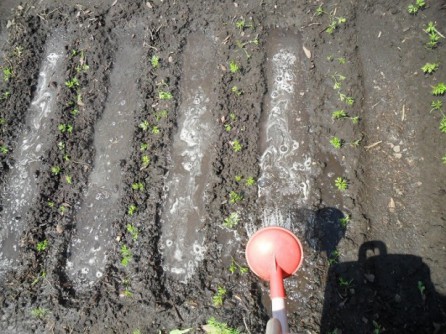
During the period of growth and formation of root crops
It is especially important to water the carrots abundantly, but infrequently, during the period of root crops formation, namely after their (root crops) thickness reaches 0.5 cm (usually this happens when 4-5 leaves are formed) and until they are fully ripe.
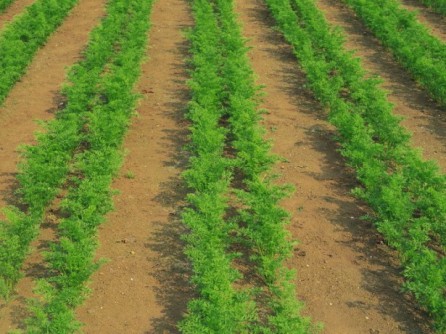
Note! With a lack of moisture at this time, the growth of root crops slows down.
And you need to water regularlyavoiding drought.
Important! If you alternate periods of dryness with high humidity (then water, then forget), such abrupt transitions will contribute to cracking of the root crops due to a sharp increase in the volume of the core.
When to stop watering (before harvest)
When the root crop is fully formed and ripe, watering the carrots is stopped.
Note! If you continue to water, then the roots will simply crack.
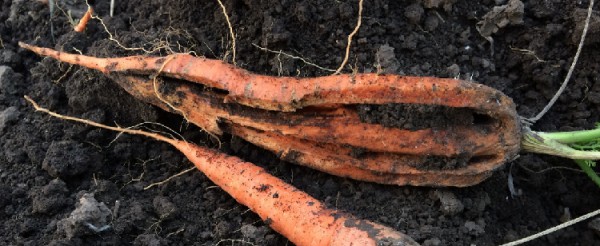
As a rule, the last time the carrots are watered 2-3 weeks before harvest.
By the way! If the weather is dry, the soil has hardened, then watering is continued, stopping only 5-7 days before harvesting.
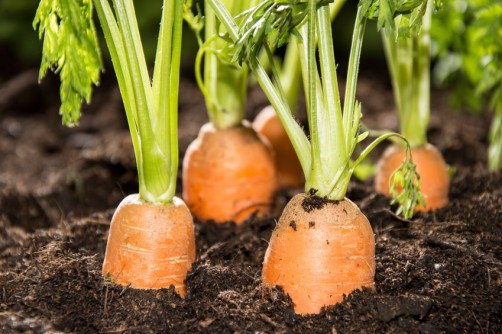
Mistakes when watering carrots and the consequences
Improper care of carrots leads to the fact that root crops crack, deformed (grow clumsy) and / or become hairy (hairy)... Including (most often) improper watering may be to blame.
In general, there are the following main mistakes made by beginners when watering carrots:
- Excess moisture or uneven watering - long delays and lack of moisture during the formation and maturation of root crops will certainly lead to them cracking.
Interesting! This happens most often on clay soils, in rainy weather.
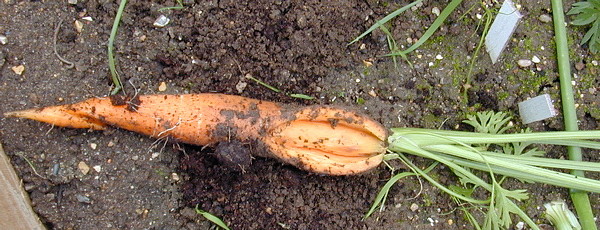
- If root vegetable there will be a lack of moisture during the growth period, then it slow down in development.
- And if the carrots lack moisture due to frequent, but superficial watering, this can lead to the formation of a large number of roots in the root crop, i.e. he (root crop) will become hairy (hairy), and start the root crop branch out.
Roots will form and branch out to draw more moisture from the topsoil.
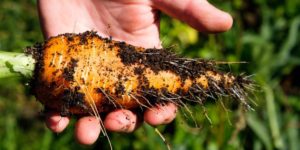
- Pouring carrot beds is also impossible, this can provoke again cracking and branching root.
Important! Excessive watering of carrots and, as a result, high humidity of the beds is also one of the most common causes of pest infestations, including carrot fly.
Other rules for carrot care
To get a rich harvest of healthy and tasty root vegetables, you should also do the following outdoor carrot care activities:
- carry out preventive treatments - protect your carrot beds from carrot flies;
Important! About, how to effectively deal with carrot fly read in this material.
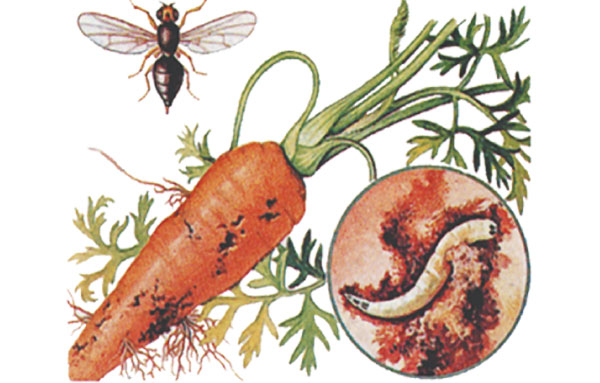
- thin out;
Note! The site has a detailed article about when and how to thin out carrots correctly.
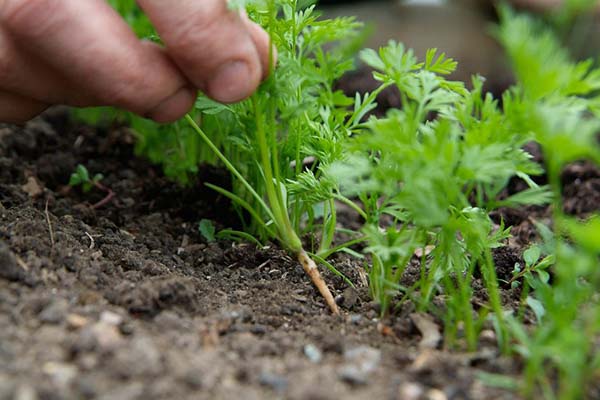
- harvest on time and correctly;
By the way! Detailed information about the timing and rules for harvesting carrots read here.
- and, of course, store it correctly.
Advice! ABOUT the nuances and methods of storing carrots in winter detailed in this article.
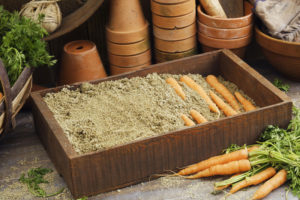
Thus, now you know how to water the carrots correctly and often so that the root vegetables grow beautiful and tasty.
Video: how to water carrots in the open field


